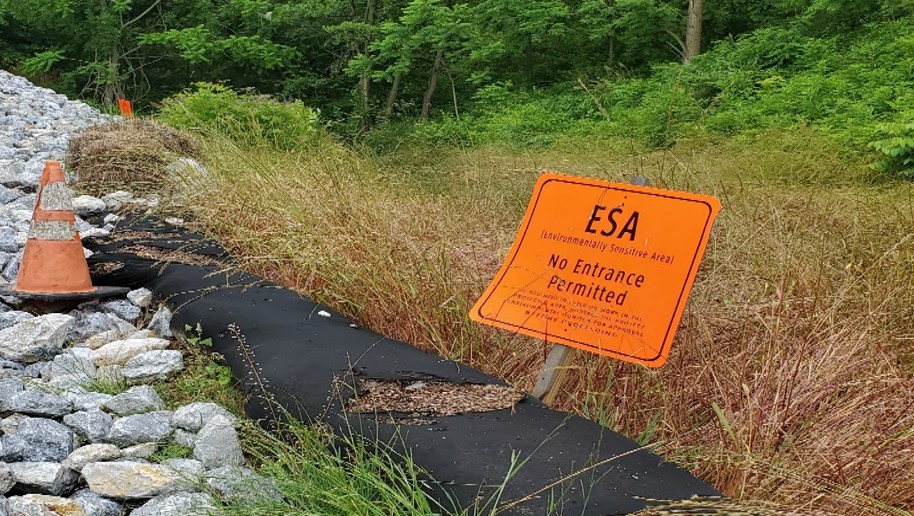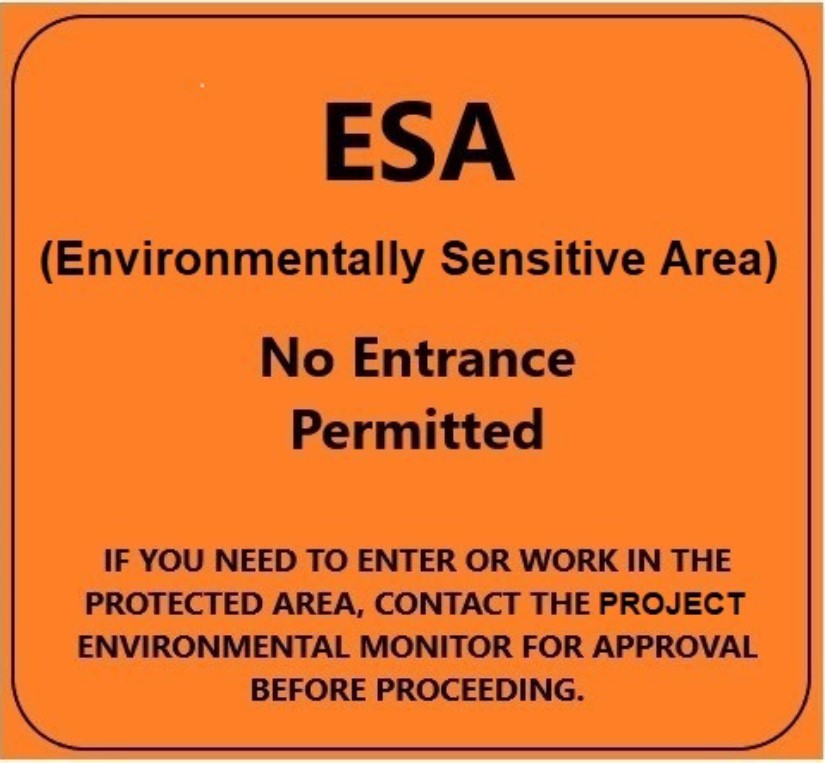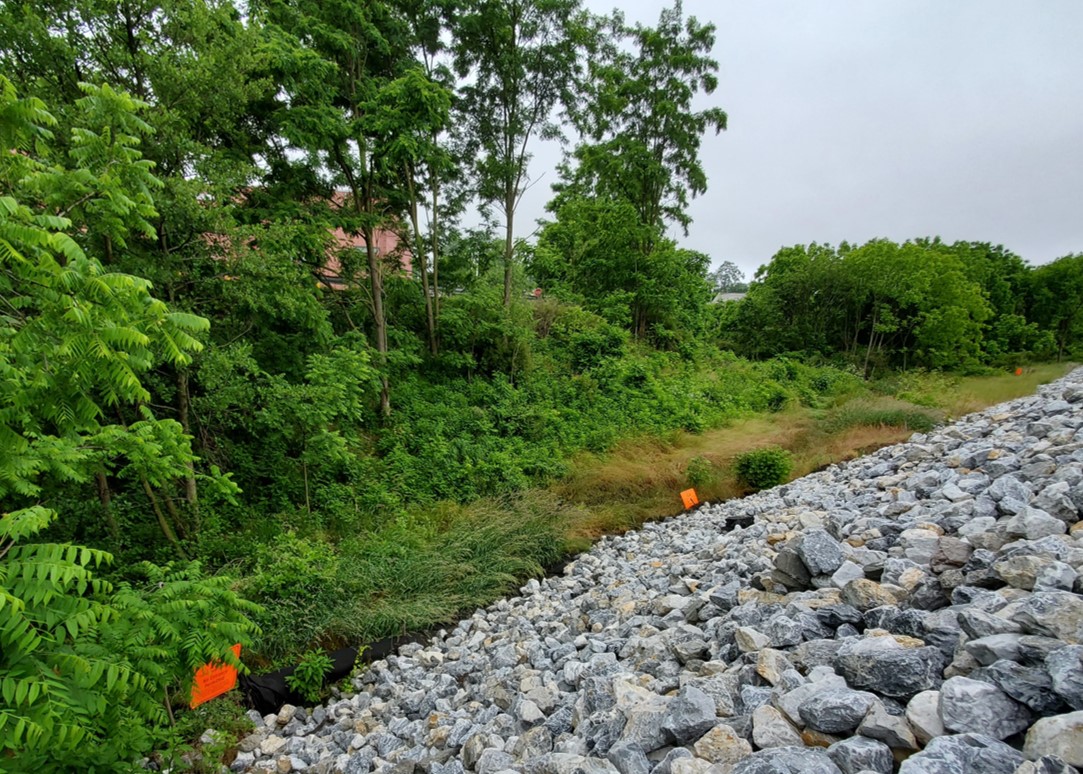Environmentally Sensitive Area Signage

Environmentally Sensitive Area (ESA) signage is specially-designed, unique signage that can be used to mark environmentally sensitive areas or areas that have been planted as mitigation. The signs alert construction and maintenance crews and the public to not disturb these areas.
How Does It Work?
ESA signage is used during construction projects to protect existing sensitive areas. Two-foot by two-foot weatherproof corrugated plastic signs, with orange background and the wording “Environmentally Sensitive Area” and additional explanatory verbiage, delineate the environmentally sensitive areas. ESA signage is spaced at 50-foot intervals along the areas to avoid.
What Are The Benefits?
The benefit of using ESA signage is the protection of environmentally sensitive resources, such as streams, endangered plants, wildlife and special areas planted for mitigation. Permit restrictions and environmental mitigations are often installed as part of highway construction projects. When people enter a sensitive area or do not understand the protection needed, resources can get disturbed or destroyed and then must be replaced. These signs help to ensure these essential environmental resources are protected.

On many construction projects, orange protective fencing is used to keep personnel and equipment out of environmentally sensitive areas. This fencing can be very cumbersome for highway contractors and maintenance crews to install and maintain. It can also catch flood debris and impede the natural flow of waterways.
ESA signage is easier and quicker to install and maintain. Time savings of installation during construction from not having to reset existing fencing is highly efficient. Alternatively, the signage can be used in addition to orange protective fencing, where access to the sensitive area could be an issue with the public at large.
Manufacturing, installation and upkeep of these signs are more cost-effective than purchasing, erecting and maintaining orange construction fencing in its place. The signs cost roughly half as much as the orange protective fencing to install.

Innovation In Motion
ESA signage has been implemented in several other states, such as Virginia and Illinois, as well as along coastlines. In Pennsylvania, the signs were successfully piloted on the Interstate 83 (I-83) Exit 4 Interchange Reconstruction project in York County, which saved 1,000 feet of orange protective fencing. Due to the success of the pilot, the STIC’s Design Technical Advisory Group (TAG) is working with PennDOT to make ESA signage a standard project special provision.
Plans also include an awareness and education effort to reference the ESA signage in specifications, and a library of mitigation measures in PennDOT’s Engineering Construction Management System (ECMS) as well as appropriate PennDOT publications to ensure designers know where to find the special provision and when to consider using this innovation.
Over time, ESA signage could be used on various projects and maintained by PennDOT maintenance crews. The signage could be used specifically when regulating agencies want to protect sensitive areas and reinforce them to the contractor and public.
More Information
For more information about this innovation, contact the STIC Management Team.